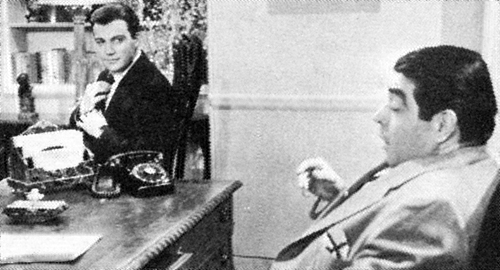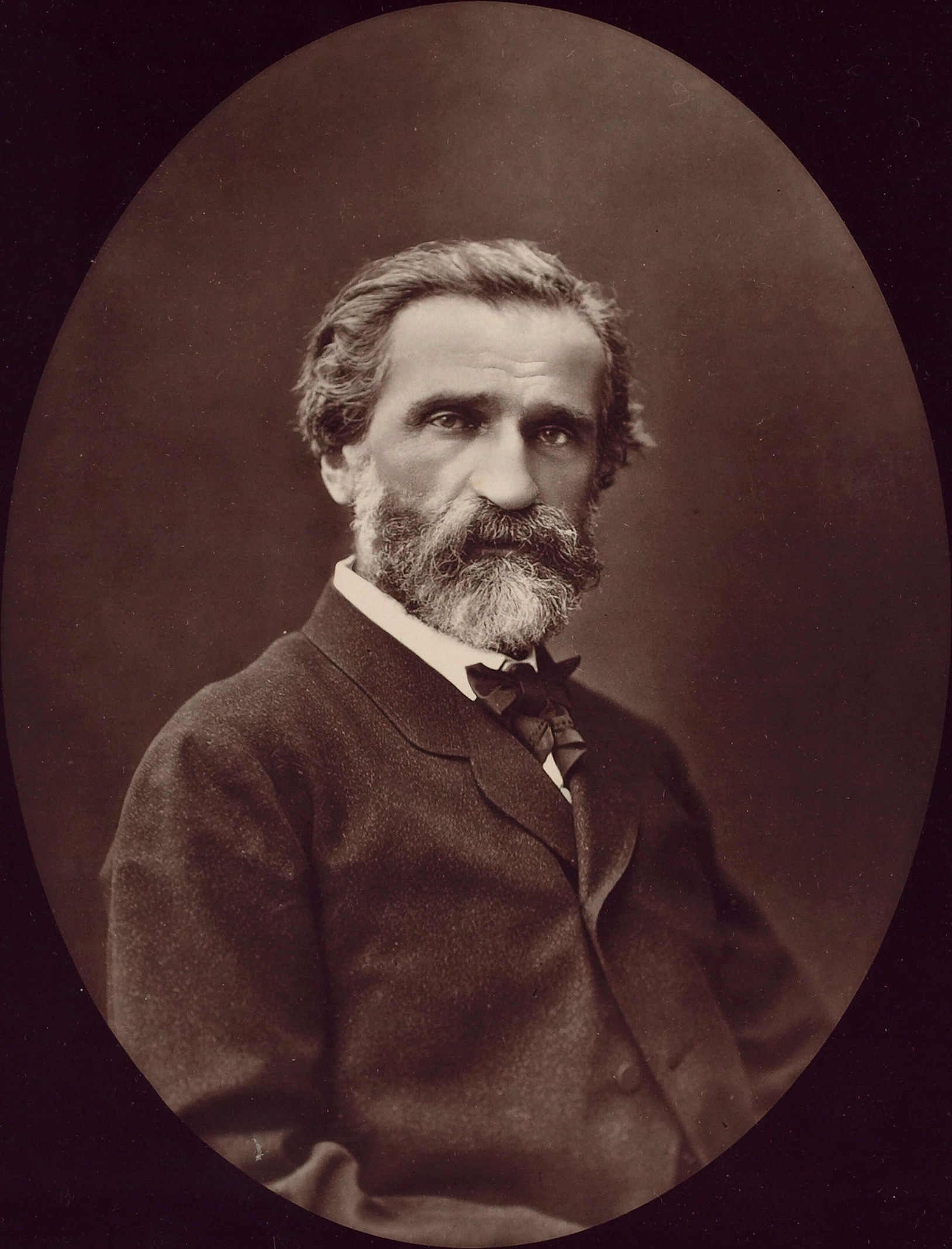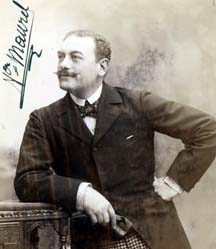|
For The First Time (1959 Film)
''For the First Time'' is a 1959 musical film directed by Rudolph Maté and starring Mario Lanza, Johanna von Koczian Kurt Kasznar and Zsa Zsa Gabor. It was tenor star Mario Lanza's final film, released by Metro-Goldwyn-Mayer six weeks before his death. The film tells the sentimental story of an operatic tenor (Tony Costa) who finds love for the first time with a young German woman (played by Johanna von Koczian), who happens to be deaf. It was shot at the Spandau Studios in Berlin and on location in 1958 in Capri, Salzburg, Berlin and at the Rome Opera House. The film's sets were designed by the art directors Hans Jürgen Kiebach, Fritz Maurischat and Heinrich Weidemann. Reception Critics singled out Lanza's singing of "Vesti la Giubba" from ''Pagliacci'' and the Death Scene from ''Otello'' for special praise, with Howard Thompson of ''The New York Times'' calling it the tenor's "most disarming vehicle in years." Cast * Mario Lanza as Tonio Costa * Johanna von Koczian as Chris ... [...More Info...] [...Related Items...] OR: [Wikipedia] [Google] [Baidu] |
Rudolph Maté
Rudolph Maté (born Rudolf Mayer; 21 January 1898 – 27 October 1964) was a Polish-Hungarian-American cinematographer, film director and film producer who worked as cameraman and cinematographer in Hungary, Austria, Germany, France and the United Kingdom, before moving to Hollywood, Los Angeles, Hollywood in the mid 1930s. Life and career Born in Kraków (then in the Grand Duchy of Kraków, Austro-Hungarian Empire, now in Poland) into a Jewish family, Maté began in the film business after his graduation from the Eötvös Loránd University, University of Budapest. He worked as an assistant cameraman in Hungary and later throughout Europe, sometimes with colleague Karl Freund. Maté worked on several of Carl Th. Dreyer's films, including ''The Passion of Joan of Arc'' (1928) and ''Vampyr'' (1932). He worked as cinematographer on Hollywood films from the mid-1930s, including ''Dodsworth (film), Dodsworth'' (1936), the Laurel and Hardy feature ''Our Relations'' (1936) and ''Stell ... [...More Info...] [...Related Items...] OR: [Wikipedia] [Google] [Baidu] |
Kurt Kasznar
Kurt Kasznar (born Kurt Servischer; August 13, 1913 – August 6, 1979) was an Austrian-American stage, film and television actor who played roles on Broadway, appearing in the original Broadway productions of '' Waiting for Godot'', ''The Sound of Music'' and ''Barefoot in the Park''. He also appeared in feature films and had many notable parts in television, including the science fiction series ''Land of the Giants''. "A big, glib, dapper man who spoke with an accent, he was almost always cast as some sort of a Continental gentleman," reported ''The New York Times''. As a soldier in World War II, Kasznar was among the first U.S. Army photographers to film the ruins of Hiroshima and Nagasaki. Early life Kurt Kasznar was born Kurt Servischer on August 13, 1913, in Vienna, Austria-Hungary. His family was Jewish. His father left the family when Kurt was very young. After his mother married Hungarian restaurateur Ferdinand Kasznar, Kurt assumed his surname. While working ... [...More Info...] [...Related Items...] OR: [Wikipedia] [Google] [Baidu] |
Otello
''Otello'' () is an opera in four acts by Giuseppe Verdi to an Italian libretto by Arrigo Boito, based on Shakespeare's play ''Othello''. It was Verdi's penultimate opera, first performed at the Teatro alla Scala, Milan, on 5 February 1887. The composer was reluctant to write anything new after the success of ''Aida'' in 1871, and he retreated into retirement. It took his Milan publisher Giulio Ricordi the next ten years, first to encourage the revision of Verdi's 1857 ''Simon Boccanegra'' by introducing Boito as librettist and then to begin the arduous process of persuading and cajoling Verdi to see Boito's completed libretto for ''Otello'' in July/August 1881. However, the process of writing the first drafts of the libretto and the years of their revision, with Verdi all along not promising anything, dragged on. It wasn't until 1884, five years after the first drafts of the libretto, that composition began, with most of the work finishing in late 1885. When it finally premiere ... [...More Info...] [...Related Items...] OR: [Wikipedia] [Google] [Baidu] |
Pagliacci
''Pagliacci'' (; literal translation, "Clowns") is an Italian opera in a prologue and two acts, with music and libretto by Ruggero Leoncavallo. The opera tells the tale of Canio, actor and leader of a commedia dell'arte theatrical company, who murders his wife Nedda and her lover Silvio on stage during a performance. ''Pagliacci'' premiered at the Teatro Dal Verme in Milan on 21 May 1892, conducted by Arturo Toscanini, with Adelina Stehle as Nedda, Fiorello Giraud as Canio, Victor Maurel as Tonio, and Mario Ancona as Silvio. Soon after its Italian premiere, the opera played in London (with Nellie Melba as Nedda) and in New York (on 15 June 1893, with Agostino Montegriffo as Canio). ''Pagliacci'' is the composer's only opera that is still widely performed. ''Pagliacci'' is often staged with ''Cavalleria rusticana'' by Pietro Mascagni, a double bill known colloquially as "Cav and Pag". Origin and disputes Leoncavallo was a little-known composer when Pietro Mascagni's ''Cavalleria ... [...More Info...] [...Related Items...] OR: [Wikipedia] [Google] [Baidu] |
Heinrich Weidemann
Heinrich Weidemann (1899–1982) was a German art director.Lowe p.179 Selected filmography * '' The Gambler'' (1938) * '' The Swedish Nightingale'' (1941) * ''Ghost in the Castle'' (1947) * ''The Trip to Marrakesh'' (1949) * ''Scandal at the Embassy'' (1950) * '' When Men Cheat'' (1950) * ''The Dubarry'' (1951) * ''Rose of the Mountain'' (1952) * '' Mikosch Comes In'' (1952) * '' Klettermaxe'' (1952) * ''Mailman Mueller'' (1953) * '' Hooray, It's a Boy!'' (1953) * ''When The Village Music Plays on Sunday Nights'' (1953) * '' Love is Forever'' (1954) * ''The Gypsy Baron'' (1954) * ''The Beautiful Miller'' (1954) * ''The Faithful Hussar'' (1954) * '' On the Reeperbahn at Half Past Midnight'' (1954) * ''Emil and the Detectives'' (1954) * '' The Country Schoolmaster'' (1954) * '' The Ambassador's Wife'' (1955) * '' When the Alpine Roses Bloom '' (1955) * ''Your Life Guards'' (1955) * ''Sergeant Borck'' (1955) * ''The Tour Guide of Lisbon'' (1956) * '' My Brother Joshua'' (1956) * ''As ... [...More Info...] [...Related Items...] OR: [Wikipedia] [Google] [Baidu] |
Fritz Maurischat
Fritz Maurischat (April 27, 1893 in Berlin – December 11, 1986) was a German production designer. He made his film debut in 1924. Over the next 38 years, he worked on over 70 films, all of them in his native Germany. He earned an Oscar nomination in 1953 for his work on the film ''Martin Luther'', an American film about Martin Luther made in Germany. He is also noted as the Art Director for the 1943 Nazi propaganda film ''Titanic''. Selected filmography * ''Taxi at Midnight'' (1929) * '' The Ship of Lost Souls'' (1929) * '' Salto Mortale'' (1931) * ''The Night Without Pause'' (1931) * '' The Rebel'' (1932) * ''Spell of the Looking Glass'' (1932) * '' The Page from the Dalmasse Hotel'' (1933) * ''Little Girl, Great Fortune '' (1933) * ''Anna and Elizabeth'' (1933) * '' The Voice of Love'' (1934) * ''Decoy'' (1934) * '' A Night of Change'' (1935) * ''The Old and the Young King'' (1935) * ''Family Parade'' (1936) * ''Sergeant Berry'' (1938) * '' A Man Astray'' (1940) * ''Carl Pete ... [...More Info...] [...Related Items...] OR: [Wikipedia] [Google] [Baidu] |
Hans Jürgen Kiebach
Hans Jürgen Kiebach (28 August 1930 – 19 May 1995) was a German production designer, art director and set decorator. He won an Academy Award in the category Best Art Direction for the film ''Cabaret''. Selected filmography * ''Three Days of Fear'' (1952) * '' We'll Talk About Love Later'' (1953) * '' Diary of a Married Woman'' (1953) * ''The Big Star Parade'' (1954) * ''Love, Dance and a Thousand Songs'' (1955) * '' Fruit in the Neighbour's Garden'' (1956) * ''The Night of the Storm'' (1957) * '' The Ideal Woman'' (1959) * ''Brandenburg Division'' (1960) * ''Grounds for Divorce'' (1960) * '' Blind Justice'' (1961) * ''The Return of Doctor Mabuse'' (1961) *'' The Curse of the Yellow Snake'' (1963) * ''Love Has to Be Learned'' (1963) * ''Breakfast in Bed'' (1963) * ''The Phantom of Soho'' (1964) * ''The Seventh Victim'' (1964) * ''The Last Tomahawk'' (1965) * '' The Defector'' (1966) * ''The Peking Medallion'' (1967) * ''Dead Run'' (1967) * '' Hannibal Brooks'' (1969) * ' ... [...More Info...] [...Related Items...] OR: [Wikipedia] [Google] [Baidu] |
Art Director
Art director is the title for a variety of similar job functions in theater, advertising, marketing, publishing, fashion, film industry, film and television, the Internet, and video games. It is the charge of a sole art director to supervise and unify the vision of an artistic production. In particular, they are in charge of its overall visual appearance and how it visual communication, communicates visually, stimulates moods, contrasts features, and psychologically appeals to a target audience. The art director makes decisions about visual elements, what artistic style (visual arts), style(s) to use, and when to use motion graphic design, motion. One of the biggest challenges art directors face is translating desired moods, messages, concepts, and underdeveloped ideas into imagery. In the brainstorming process, art directors, colleagues and clients explore ways the finished piece or scene could look. At times, the art director is responsible for solidifying the vision of the col ... [...More Info...] [...Related Items...] OR: [Wikipedia] [Google] [Baidu] |
Rome
, established_title = Founded , established_date = 753 BC , founder = King Romulus (legendary) , image_map = Map of comune of Rome (metropolitan city of Capital Rome, region Lazio, Italy).svg , map_caption = The territory of the ''comune'' (''Roma Capitale'', in red) inside the Metropolitan City of Rome (''Città Metropolitana di Roma'', in yellow). The white spot in the centre is Vatican City. , pushpin_map = Italy#Europe , pushpin_map_caption = Location within Italy##Location within Europe , pushpin_relief = yes , coordinates = , coor_pinpoint = , subdivision_type = Country , subdivision_name = Italy , subdivision_type2 = Region , subdivision_name2 = Lazio , subdivision_type3 = Metropolitan city , subdivision_name3 = Rome Capital , government_footnotes= , government_type = Strong Mayor–Council , leader_title2 = Legislature , leader_name2 = Capitoline Assemb ... [...More Info...] [...Related Items...] OR: [Wikipedia] [Google] [Baidu] |
Salzburg
Salzburg (, ; literally "Salt-Castle"; bar, Soizbuag, label=Bavarian language, Austro-Bavarian) is the List of cities and towns in Austria, fourth-largest city in Austria. In 2020, it had a population of 156,872. The town is on the site of the Roman settlement of ''Iuvavum''. Salzburg was founded as an episcopal see in 696 and became a Prince-Archbishopric of Salzburg, seat of the archbishop in 798. Its main sources of income were salt extraction, trade, and gold mining. The fortress of Hohensalzburg Fortress, Hohensalzburg, one of the largest medieval fortresses in Europe, dates from the 11th century. In the 17th century, Salzburg became a center of the Counter-Reformation, with monasteries and numerous Baroque churches built. Historic Centre of the City of Salzburg, Salzburg's historic center (German language, German: ''Altstadt'') is renowned for its Baroque architecture and is one of the best-preserved city centers north of the Alps. The historic center was enlisted as a UN ... [...More Info...] [...Related Items...] OR: [Wikipedia] [Google] [Baidu] |
Capri
Capri ( , ; ; ) is an island located in the Tyrrhenian Sea off the Sorrento Peninsula, on the south side of the Gulf of Naples in the Campania region of Italy. The main town of Capri that is located on the island shares the name. It has been a resort since the time of the Roman Republic. Some of the main features of the island include the (the little harbour), the Belvedere of Tragara (a high panoramic promenade lined with villas), the limestone crags called sea stacks that project above the sea (the ), the town of Anacapri, the Blue Grotto (), the ruins of the Imperial Roman villas, and the vistas of various towns surrounding the Island of Capri including Positano, Amalfi, Ravello, Sorrento, Nerano, and Naples. Capri is part of the region of Campania, Metropolitan City of Naples. The town of Capri is a and the island's main population centre. The island has two harbours, and (the main port of the island). The separate of Anacapri is located high on the hills to the w ... [...More Info...] [...Related Items...] OR: [Wikipedia] [Google] [Baidu] |
Location Shooting
Location shooting is the shooting of a film or television production in a real-world setting rather than a sound stage or backlot. The location may be interior or exterior. The filming location may be the same in which the story is set (for example, scenes in the film ''The Interpreter'' were set and shot inside the United Nations Headquarters in Manhattan), or it may stand in for a different locale (the films ''Amadeus'' and '' The Illusionist'' were primarily set in Vienna, but were filmed in Prague). Most films feature a combination of location and studio shoots; often, interior scenes will be shot on a soundstage while exterior scenes will be shot on location. Second unit photography is not generally considered a location shoot. Before filming, the locations are generally surveyed in pre-production, a process known as location scouting and recce. Pros and cons Location shooting has several advantages over filming on a studio set. First and foremost, the expense can often ... [...More Info...] [...Related Items...] OR: [Wikipedia] [Google] [Baidu] |




